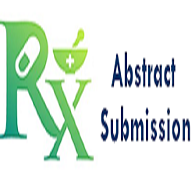Call for Abstract
Scientific Program
17th World Congress on Traditional and Complementary Medicine, will be organized around the theme “Reviving Tradition: Herbal Healing and Natural Therapies”
Traditionalmedicine 2026 is comprised of keynote and speakers sessions on latest cutting edge research designed to offer comprehensive global discussions that address current issues in Traditionalmedicine 2026
Submit your abstract to any of the mentioned tracks.
Register now for the conference by choosing an appropriate package suitable to you.
Traditional medicine deals with the science of ancient medicine. The art and methods of the archaic medicine are based on beliefs, theories, and experiences related to variant cultures which are used in preservation of health and in halt, treatment, diagnosis of physical and mental illness. Traditional medicine is also described as complementary (or) alternative medicine. Herbal medications are more suitable usage form of traditional medicine. It may include, Homeopathy, Naturopathy and Chinese or Oriental medicine, Acupuncture and Ayurveda
Complementary medicine is treatments that is used along with measure with preventive administration but are not treated to be standard managements. It is used when these ways are used instead of the traditional medicine. There are types of complementary health are Cupping, Yoga, Tai Chi, Qi Gong, Chiropractic, Special Diets, Progressive Relaxation, Crystal healing, Osteopathic Manipulation, Meditation, Massage
Spiritual therapy treatment is a plan of counselling or psychotherapy that associates with religious influences, noble, spiritual and also on physical health and values to boost up self. There are benefits of spiritual healing in n which it comforts emotional clearing and mystical growth raises the fluctuation frequency of the body, it also creates leisure and aids the body to relief stress and pressure, it increases strength and delays the aging process and hold the immune system
Herbal medicine is also known as herbalism. It is the study of the botany and use of medicinal plants. Plants have been the base for medical analysis through much of human history, and such traditional medicine is generally practiced today. Herbal medicines are one form of dietary additive; they are sold as capsules, powders, teas, tablets and dried plants or fresh. People use herbal medicines to maintain and improve their health. People believe that brand labelled as essential is always good and safe. Some of medicinal herbs used as herbal medicines are Chamomile, Echinacea, Feverfew, Ginger, Gingko, Ginseng, Garlic, and Goldenseal. There are aids of herbal medicine like more reasonable than traditional medicine. It’s easier to collect than drug medicine. It balances hormones and growth use in natural healing and gives strength in immune system and also has fewer side effects.
Acupuncture is an ancient curing practice of traditional Chinese medicine and it is a form of medication that involves injecting very thin needles through a skin at distinct points on the body to various bottoms. Researchers even propose that it helps in soothing pain. Acupuncture is used to treat many different illness and pain conditions. Some are tendinitis, arthritis, headaches, chronic pain, digestive disorders, respiratory disorders, chronic fatigue syndrome, skin problems and dysmenorrhea. The most common side effects of acupuncture are pain and bleeding from the insertion of acupuncture needles. The alternative side effects are skin rashes, pain, bleeding, nausea, dizziness and allergic reactions.
Holistic medicine is the profession and science of curing that addresses the person body, mind, and spirit. The method of holistic medicine combines traditional and alternative therapies to avoid and treat disease and mostly to improve optimal strength and health. The quality of holistic health is characterised as the limitless and unhampered free flow of life force energy through body, mind, and spirit.

